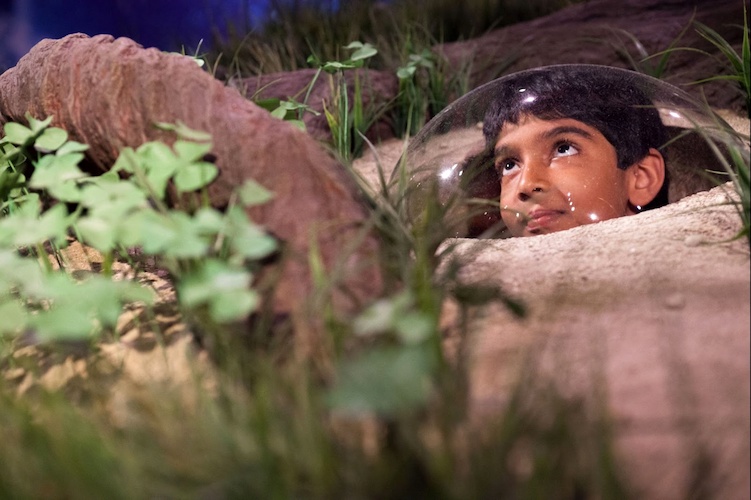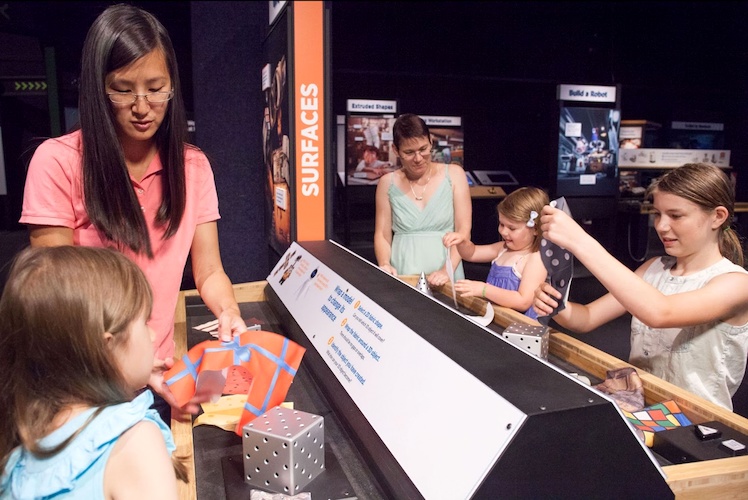The Science and Tech That Inspires the Art of Pixar Takes Center Stage as STEAM Exhibit Arrives at COSI in Ohio
This is the latest stop for the touring exhibition.
Starting in October, guests visiting the Center of Science and Industry in Columbus, Ohio will get a closer look behind the technology that inspires the art (and the art that inspires the technology) at Pixar Animation Studios.
What’s Happening:
- On October 11th, 2025, the Center of Science and Industry (COSI) is bringing that creative process to life with The Science Behind Pixar, an interactive exhibition embodying the science, technology, engineering, art, and math (STEAM) thinking skills needed to create compelling films.
- COSI, located in Columbus, Ohio, has delighted Central Ohio with all things science for 60 years, inspiring interest in STEAM topics and delivering an experiential brand of learning and serves as a trusted educational resource for families, schools, and community partners.
- Spanning 10,000 square feet and created by the Museum of Science, Boston and Pixar Animation Studios, The Science Behind Pixar reflects every step of Pixar’s production process: Modeling, Rigging, Surfaces, Sets and Cameras, Animation, Simulation, Lighting, and Rendering.
- Through hands-on activities inspired by films like Toy Story to Incredibles 2, visitors of all ages will learn how science and artistry intersect at every stage of the process.
- From experimenting with lighting challenges from Finding Nemo, to creating a digital sculpture from a sketch, to seeing how camera placement created a bug’s-eye view in A Bug’s Life, visitors will uncover the artistry and problem-solving that fuel Pixar’s iconic stories.
- The exhibition also includes video interviews with members of Pixar’s production teams, offering first-hand insights into the collaboration between artists, scientists, and engineers.
- Visitors will also have the opportunity to take their photo with human-size recreations of many of their favorite Pixar film characters, including Buzz Lightyear, Dory, Mike and Sulley, Edna Mode, and WALL•E.
What They’re Saying:
- COSI President and CEO Dr. Frederic Bertley: “Pixar has a way of making the impossible feel real – but what’s often overlooked is the real science, math, and problem-solving behind that magic… The Science Behind Pixar is a masterclass in how science, technology, engineering, art, and math come together to build entire worlds from the ground up. It’s engaging, hands-on, and deeply inspiring. We’re proud to bring this exhibition to Ohio and help young people see that with the right tools, their ideas can become reality."
- Jim Morris, president of Pixar Animation Studios: “The Science Behind Pixar is an interactive exhibit that offers people a hands-on opportunity to understand how we make our films… At Pixar, we use science, technology, engineering, art, and math – along with a significant dash of creativity and fun – and this exhibit is truly a great demonstration of how all those ingredients come together in our filmmaking process."
Science and Pixar:
- Despite what the majority might think - there is equal parts science as there is art behind the films at Pixar Animation Studios.
- In fact, Ed Catmull (one of the three founders of the studio), graduated from the University of Utah with a PhD in Computer Science.
- Catmull developed groundbreaking techniques, like texture mapping, bicubic patches, and Z-buffering - all of which became cornerstones of 3D computer graphics. He created a rendering in 3D graphics of his own hand, dubbed “A Computer Animated Hand" which was used in a background shot in the film FutureWorld. The film was also inducted into the Library of Congress’ National Film Registry for being “Culturally, Historically, or Aesthetically Significant."
- Catmull later joined the graphics lab at the New York Institute of Technology, which itself had the goal of creating the first Computer Animated feature film, with Catmull leading a team of artists and engineers - some who would become key figures at what would be Pixar.
- In 1979, that groundwork was laid when George Lucas hired Catmull to lead the computer division at Lucasfilm, where Catmull and the team worked on digital image processing, special effects, and early CGI animation.
- The innovation at the studio continues to this day, including the hugely popular (in the industry) open source software, Universal Scene Description, or USD. You can read more about technology and science at the studio in our interview with Pixar’s Chief Technology Officer Steve May, here.







